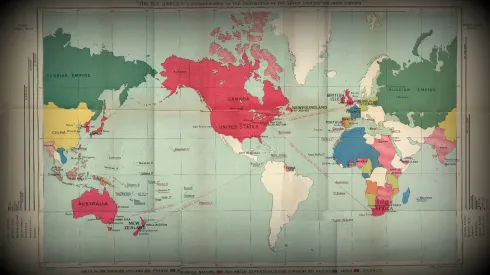
Interest in professional soccer is growing at an unprecedented pace in the United States and Canada. However, not all markets are created equally. If marketing and stadium circumstances are favorable, almost any metropolitan area over 500,000 citizens could support pro soccer, but some have better situations than others.
While the United States and Canada ended the current regular season with 20 MLS teams, 24 USL clubs and 11 NASL sides, expansion teams have already been confirmed for Atlanta (MLS), Minneapolis–Saint Paul (MLS), Los Angeles (MLS), Miami (NASL) and Reno (USL) with more expected to be announced in the next 12 months.
However, out of the cities in the United States and Canada where there are no MLS, NASL or USL teams, which cities are best positioned and deserving of having their own MLS, NASL or USL team?
I’ve ranked the top 20 cities in the US and Canada that are best positioned for the expansion of professional soccer.
First, some background on the rankings.
I ranked the markets without pro soccer clubs now on the following criteria:
- Market size
This is based on the size of TV markets and the metropolitan areas including catchment areas outside MSA’s.
- Existing supporters base
Existing soccer supporters culture in the area.
- Existing soccer infrastructure
Does the area have strong youth clubs or amateur/semi-pro clubs? Do they have a facility that can be used for either training or games initially?
Each category is scored 1-10.
Why are facilities not ranked?
We have chosen not to rank facilities in these markets because the assumption is that every professional club will need to develop a soccer-specific-stadium and build its own facilities. However a general feel for facilities is placed in the “existing soccer infrastructure” category.
Why is soccer history not considered?
We’ve seen some markets that were strong in the original NASL and early days of the A-League not kick on while totally new markets with no soccer history have been incredibly successful. The new era of soccer interest that began soon after the 2006 World Cup does not connect with historical factors except in some very specific instances.
As a soccer historian and someone with great nostalgia for the original NASL, the recent success of Orlando, Oklahoma City and Kansas City demonstrate that a rich soccer history isn’t required. Historical factors do benefit cities like St Louis but have often been overrated.
Note: Austin not ranked due to possible return of Aztex in 2017.
Rankings:
| RANK | CITY | MARKET SIZE | SUPPORTERS | INFRASTRUCTURE | SCORE |
|---|---|---|---|---|---|
| 1 | Detroit | 10 | 10 | 7 | 27 |
| 2 | San Diego | 9 | 7 | 10 | 26 |
| 2 | Nashville | 8 | 10 | 8 | 26 |
| 4 | San Francisco | 10 | 7 | 8 | 25 |
| 5 | Milwaukee | 7 | 8 | 8 | 23 |
| 6 | Baltimore | 8 | 7 | 7 | 22 |
| 6 | Chattanooga | 4 | 9 | 9 | 22 |
| 6 | Hartford/Springfield | 8 | 7 | 7 | 22 |
| 9 | Omaha | 5 | 7 | 9 | 21 |
| 10 | Providence/Newport | 7 | 7 | 6 | 20 |
| 11 | Des Moines | 5 | 7 | 7 | 19 |
| 11 | Inland Empire | 10 | 5 | 4 | 19 |
| 11 | Las Vegas | 7 | 6 | 6 | 19 |
| 11 | Virginia Beach/Norfolk | 7 | 5 | 7 | 19 |
| 15 | Fresno | 6 | 6 | 6 | 18 |
| 16 | Birmingham | 6 | 6 | 5 | 17 |
| 16 | Cleveland | 9 | 4 | 4 | 17 |
| 16 | Albuquerque | 5 | 6 | 6 | 17 |
| 19 | Sarasota/Brandenton | 5 | 4 | 7 | 16 |
| 20 | El Paso | 5 | 5 | 4 | 14 |
SEE MORE: Discuss the rankings tonight live on Divers and Cheats from 9-10pm ET on Rabble.
Background on the different cities:
Detroit
Detroit City FC is the hippest club in the country. Many fans across the nation have adopted Detroit City FC as a second team due to the robust supporters culture the 4th tier club has developed. The area, which is being quickly revived, represents the largest TV market in the country without a professional team. Detroit City FC is the only non-professional club in a position where they don’t have to bid to pro leagues. The pro leagues will all be bidding to have them join them. They are the crown jewel club in a market that is the largest one left untapped on the map.
San Diego
San Diego remains an elusive pro soccer market. Many prospective owners seeking a pro club have come and gone through the years. The greatest obstacle is consolidating the soccer community and finding an adequate facility to play. But the soccer community here is massive, a west coast version of St Louis. Since the sport is expanding at the professional level so rapidly, San Diego will be on deck real soon.
Nashville
A great soccer community resides here that has a vibrant supporters culture and a history of backing pro teams, amateur sides and international games. This market won’t be open much longer.
San Francisco
Honestly, this is the toughest city to rank. The San Francisco catchment area is filled with soccer supporters, colleges and existing youth clubs. However, San Jose Earthquakes of MLS is down the road and, unlike some large markets where MLS is weak (Boston and Chicago come to mind immediately) and thus might be tempting for NASL to jump in, the Earthquakes do have a footprint throughout the Bay Area. Having said that, a club playing in the city of San Francisco might just be a winner for NASL or USL.
SEE MORE: Ranking the professional soccer teams in the United States from best to worst.
Milwaukee
The Milwaukee Rampage was successful for years in Division 2. So successful that Minnesota fans still sing about them ten years after folding. Indy Eleven President Peter Wilt, who is one of the smartest people in US soccer, would make a Milwaukee club (his hometown) one of the best in the nation with any sort of decent investment.
Baltimore
When Crystal Palace Baltimore operated from 2007 to 2010 in the US lower divisions, the biggest obstacle they faced was not association with an English club but the popularity of indoor soccer locally. But with several high-profile outdoor friendlies having captivated Baltimore’s appetite and DC United’s decision not to relocate 30 miles north, the market is open and ready for another shot.
Chattanooga
Chattanooga FC drew 20,000 fans to the NPSL Final this season and has consistently drawn well since they began play in 2009. Market size is a drawback especially with the ridiculous USSF standards on population/metro area size. But an existing fan base and infrastructure should trump potential market size when it comes to this one.
Hartford/Springfield
It’s strange that Hartford, despite persistent rumors, still hasn’t gotten a shot at a team. When the Western Massachusetts club in the third division existed, the team was at the northern end of the catchment area. That club has since dropped to PDL yet Hartford nor Springfield have gotten another shot yet.
Omaha
Omaha is another sleeper market. Creighton University has long made soccer a mainstream sport here and the area boosts an active supporters culture around the college, amateur teams and even some foreign clubs.
Providence/Newport
In theory, this is a very good and open market. In reality, the Providence area is probably too close to MLS’ New England Revolution to sustain a very successful pro team unless the Revs move to Boston.
Des Moines
A small market but a potential sleeper as the Des Moines Menace of the PDL has long been a strong draw locally. The PDL club has an established brand identity not only locally but throughout the national soccer community. Whether the base is enough for a professional club in a tiny market remains to be seen.
Inland Empire (Riverside/San Bernardino/Ontario)
Part of the larger Los Angeles TV market and catchment area, the populations of San Bernardino and Riverside counties have exploded over the past two decades. As this has happened and entertainment options have sprung up locally, more and more people have begun working in the area. A smaller percentage of the population commutes to Los Angeles than ever before.
Las Vegas
Vegas seems like it could be a big hit for NASL or USL, depending on who gets there first. Stadium issues are the big drawback as is the summer heat. If a team can creatively schedule matches during the cooler night time and build a new facility, this could be a huge hit.
Virginia Beach/Norfolk
One of the nation’s first soccer-specific stadiums was built in this area, but unfortunately the USL Virginia Beach Mariners soon went under. The area hasn’t developed a real supporters culture since the demise of that club.
Albuquerque
Albuquerque and Santa Fe have some real soccer support that has yet to be tapped at a high level. It’s a market worth trying and could be the most visible pro sports team in New Mexico. Hot weather in the summer months similar to Las Vegas remains a potential obstacle.
Fresno
Some concerns about Fresno relate to the disposable income for those who have supported PDL and adult leagues here. But the fanbase is potentially large and worth a shot.
Birmingham
Birmingham is a decent-sized market that has done okay for national team games. Eventually someone will give this market a go.
Cleveland
The Cleveland City Stars competed for a few years in the lower divisions before fizzling out. Nobody has really looked seriously at Cleveland since despite the large market size.
Sarasota/Bradenton
Home of the IMG Bradenton Academy and Lakeview Ranch, which hosts numerous preseason NASL and MLS teams, this area is just across the Sunshine Skyway Bridge from the Tampa Bay Rowdies perhaps precluding an investor from wanting to place a team here. However, youth soccer is exploding in the area and disposable income is high by Florida standards.
El Paso
The collapse of Indios USA left the area just north of the Mexico border without pro soccer. Going to El Paso would be a risk though given the low disposable income in the area.














